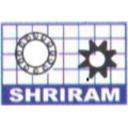
Decoding the Art of Tur Dal Making: A Journey from Harvest to Plate
Tur dal, also known as pigeon pea, is a staple in Indian households, cherished for its versatility, rich flavor, and high nutritional value. This blog aims to unravel the intricate process of tur dal making, from the cultivation of the pigeon pea plant to the final steps that grace it onto our plates. As we embark on this journey, we'll explore the expertise of two industry leaders, Shriram Associates and Dal Mill Mart, renowned for their contribution to the grain processing sector.
1. Cultivation of Pigeon Pea:
The journey of tur dal begins in the fields, where farmers carefully cultivate pigeon pea plants. These plants thrive in warm climates and are often grown as both food and fodder crops. Shriram Associates and Dal Mill Mart source their pigeon peas from trusted farmers, ensuring the highest quality for further processing.
2. Harvesting and Drying:
Once the pigeon pea plants mature, it's time for harvest. The pods containing the precious tur dal are carefully plucked to avoid damage. The harvested pods undergo a meticulous drying process, where they are left in the sun to reduce moisture content. This crucial step ensures the longevity and quality of the tur dal.
3. Cleaning and Grading:
The dried pigeon pea pods reach processing units where the cleaning and grading process takes place. Modern machinery, such as magnetic destoners and other cleaning equipment offered by Shriram Associates and Dal Mill Mart, plays a pivotal role in removing impurities, stones, and foreign particles from the tur dal. This stage is crucial to guarantee the purity and hygiene of the final product.
4. Dehusking:
The cleaned and graded tur dal then undergoes the dehusking process. In this stage, the outer layer of the dal is removed to reveal the edible inner portion. State-of-the-art dehusking machines, available through Shriram Associates and Dal Mill Mart, ensure efficiency and precision, maintaining the integrity of the dal.
5. Polishing:
For an appealing finish and enhanced quality, tur dal often undergoes a polishing process. Polishing machines, available from industry leaders, give the dal a shiny appearance while preserving its nutritional value. This step is optional and is often influenced by market preferences.
6. Sorting and Packaging:
The final stage involves sorting the tur dal based on size and quality. Advanced sorting machines, offered by Shriram Associates and Dal Mill Mart, use cutting-edge technology to ensure uniformity. The sorted tur dal is then carefully packaged, ready to reach kitchens across the country.
7. Quality Assurance:
Both Shriram Associates and Dal Mill Mart adhere to stringent quality control measures throughout the tur dal making process. Their commitment to excellence is reflected in every step, ensuring that consumers receive a product that meets the highest standards of quality, purity, and nutritional value.
Conclusion: Nourishing Homes with Quality Tur Dal:
As we trace the journey of tur dal from cultivation to the dining table, it becomes evident that each step requires precision, expertise, and dedication. Shriram Associates and Dal Mill Mart, with their cutting-edge technology and unwavering commitment to quality, contribute significantly to the seamless tur dal making process.
Next time you savor a delicious bowl of tur dal, appreciate the meticulous process it undergoes, thanks to the expertise of industry leaders like Shriram Associates and Dal Mill Mart. Their dedication to providing high-quality tur dal ensures that your meals are not only tasty but also packed with essential nutrients.


